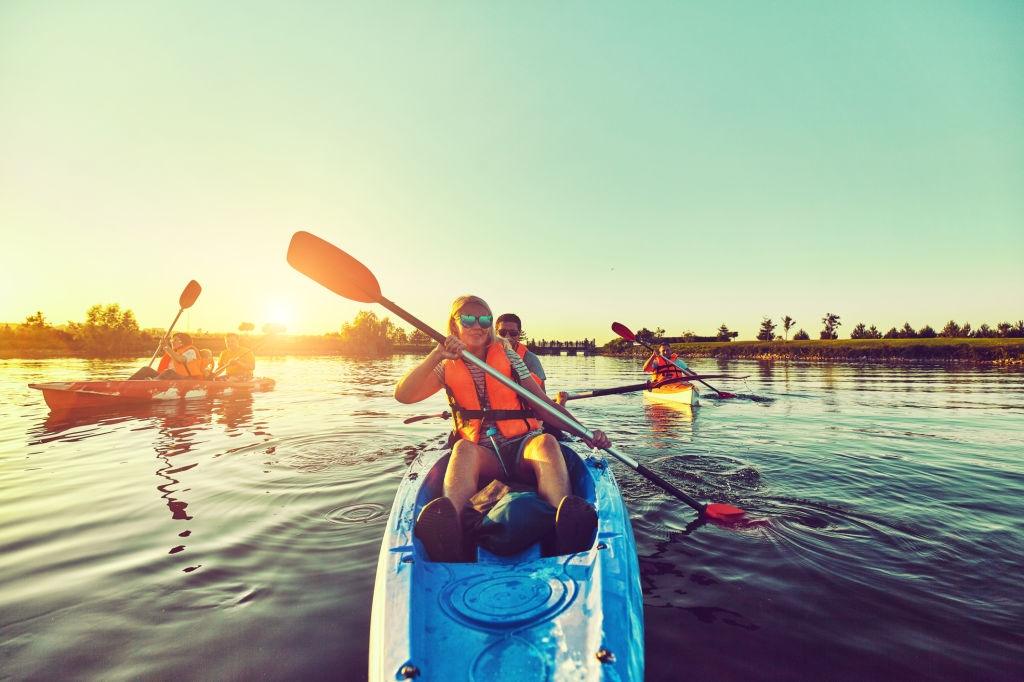Since the 1970s when the first roto-molded kayaks were launched, a proliferation in models and designs has existed to match any possible function and every requirement.
White-water or shore, sea, beach, surfing, and leisure are the main categories open. A kayak is also called a boat in some countries, but there are three distinct areas where a canoe is distinguished from a kayak. These are more smooth bottomed, have no cockpit and are usually paddled from kneeling posture with a single blade or from slightly elevated benches.
White-water Such styles of vessels are generally small and trade off pace for stability and are highly maneuverable, too. To weir play they have small stubbed kayaks.
Typically built for single paddlers and encompassing kayakers ‘ leisure dimension for sedate river travel.
Kayaks at the Sea Sea are often long with a thin beam and built to carry one or two paddlers on open water. We have plenty to shop for any kayak items.
Sitting on top In recent years the sit on top is gaining tremendous attention. The hull is secured, so that it is unsinkable. We have scupper holes around the region of the cockpit to let water drain out. The sit on top makes a perfect fishing boat as the sit on top beam is usually long giving stability to the vessels and enabling the fisherman or diver to quickly leave and re-enter the boat.
Surf Normally this is a smaller vessel with a ton of rocker to the neck. These are constructed of a number of materials, from very stiff to soft. Surf kayaks are classified in two classes, high performance and international class with at least three meters of duration in the latter. Beach kayak equivalents are wave skis or beach skis and some ride on top kayaks. These usually have no space for any kayak attachments and are also built to play on casual waves, much like conventional surfboards.
Wooden Two styles of wooden kayak are made, stitch & glue, and strip. Stitch and adhesive are made of plywood and copper wire of a maritime quality. Once the frame is installed the copper wire will be stripped and the boat will be lined with fiberglass to stabilize the boat and provide waterproof sealing.
Wooden kayaks constructed from strips are designed using oak, redwood and cedar. These are much harder to build than their equivalents for stitch & glue, and can be expensive to buy off the shelves as such.
Inflatable Inflatable sales have increased significantly in recent years, because they make excellent kayaks at the entrance stage. An inflatable can be conveniently transported and placed. Not to be mistaken with a decent inflatable or inexpensive blow-up items accessible from most department stores. In a matter of minutes an inflatable kayak is quickly pumped up manually. It is best suited for river trips and peaceful seas. Usually an inflatable kayak as well as a conventional plastic kayak will not work. These are constructed of toughened PVC and occasionally come with a fabric or polyester cover to shield the boat from splits and punctures. Many inflatable kayaks usually built for leisure purposes have plenty of room for any kayak accessories.
Fishing The fishing kayak has also gained popularity, resulting in the alteration and adjustment of many styles to match this growing activity. With a twin hull or outrigger, you should purchase one, which improves flexibility, enabling the fisherman to stand when fishing. A fishing kayak on top of a kayak will quite often imitate a lie.
Sporting Professional kayaks in the Olympic Games for sporting purposes and World Championships are designed specifically for flat water racing. We are known as the K1, K2 and K4 respectively reflecting the sum of paddlers. They are extremely lightweight, brittle and costly but very quick.

